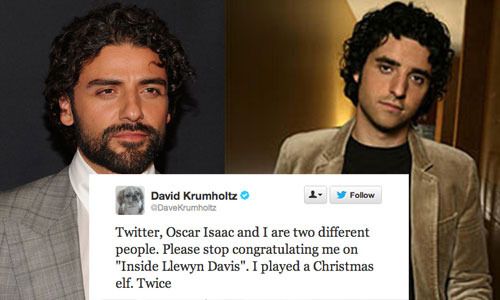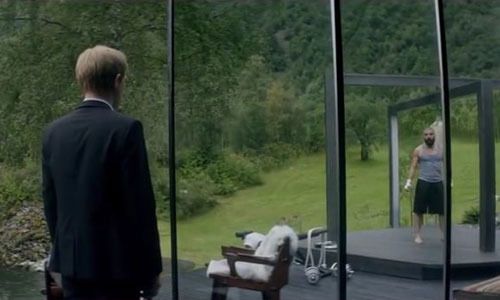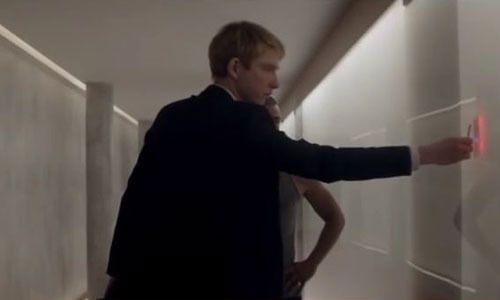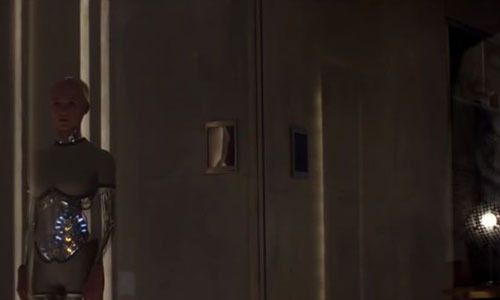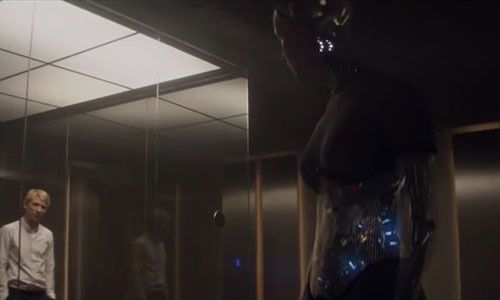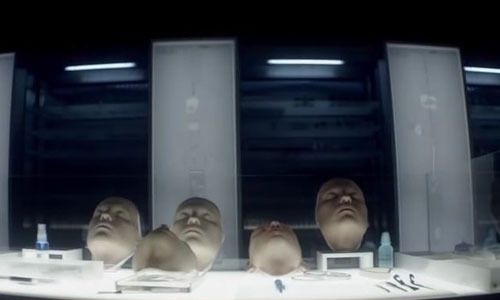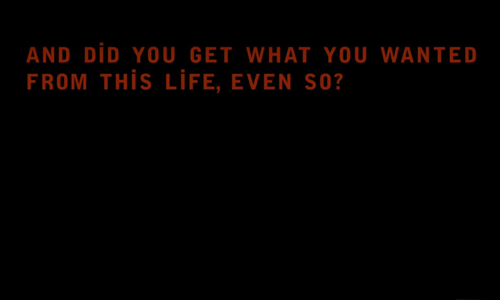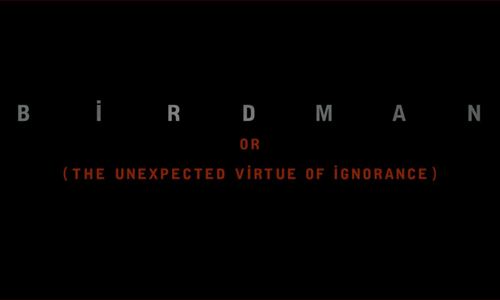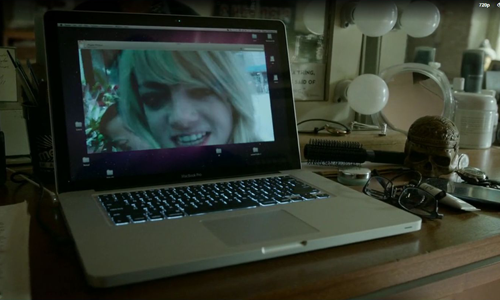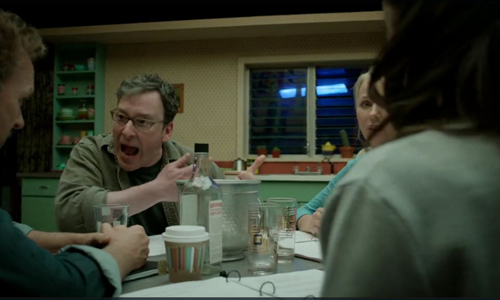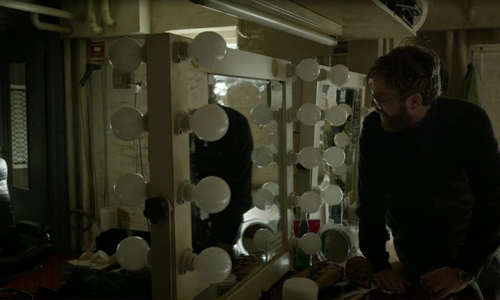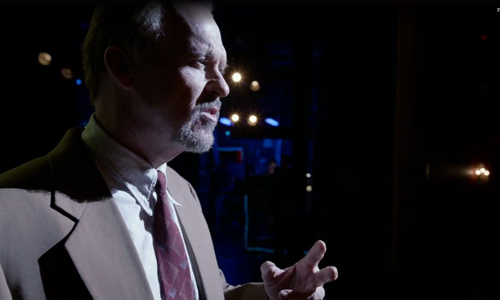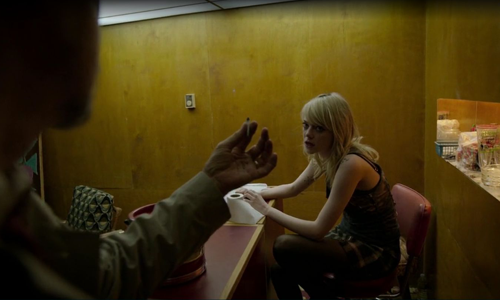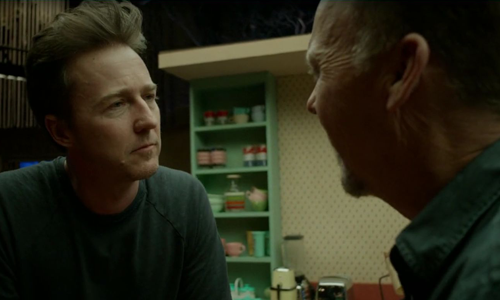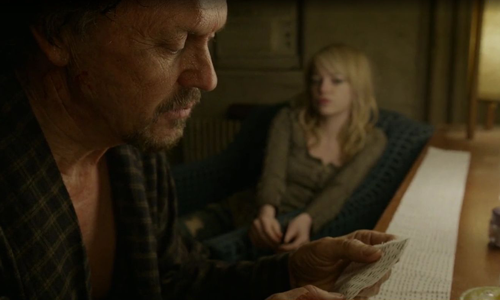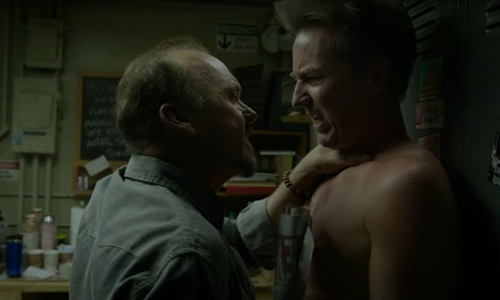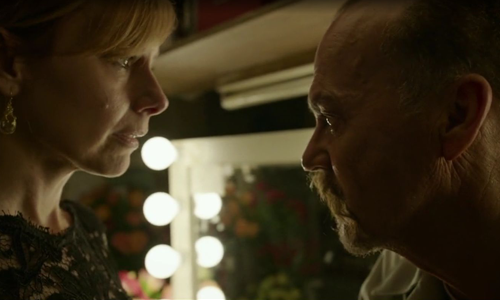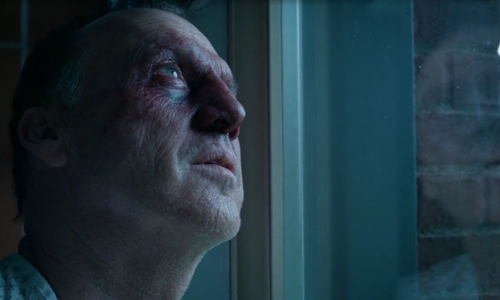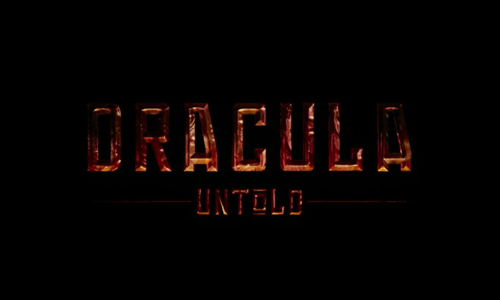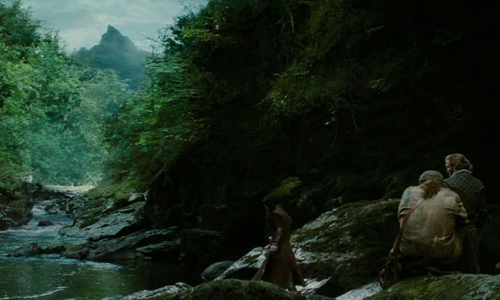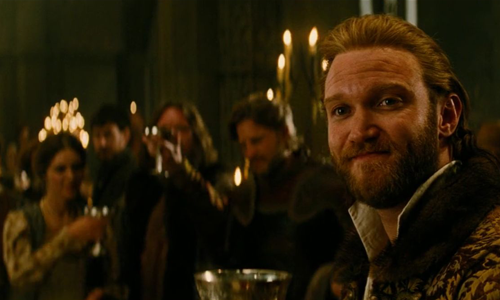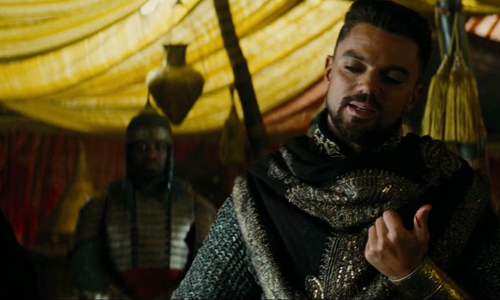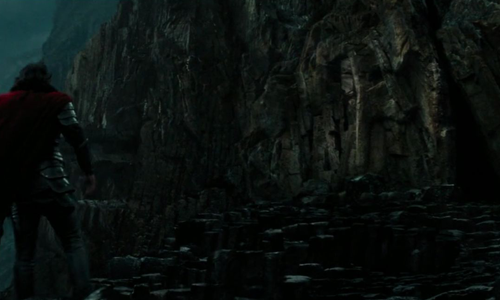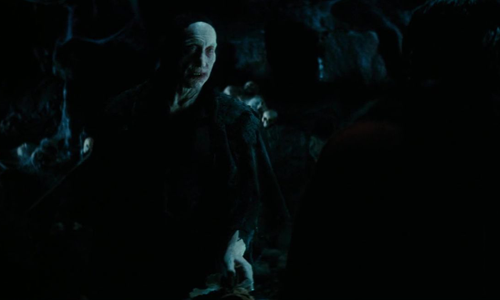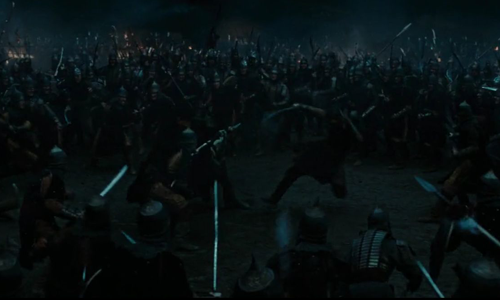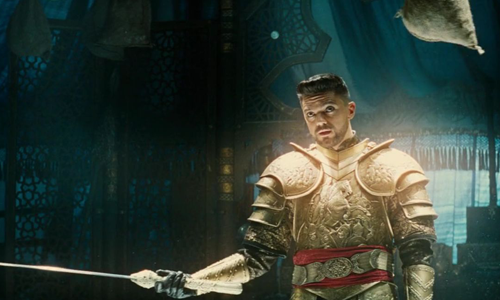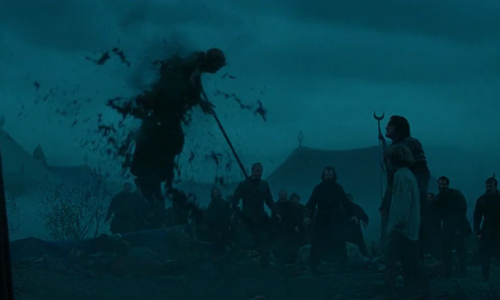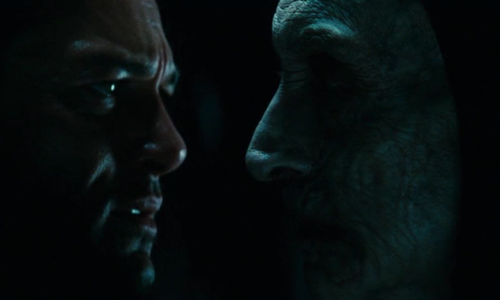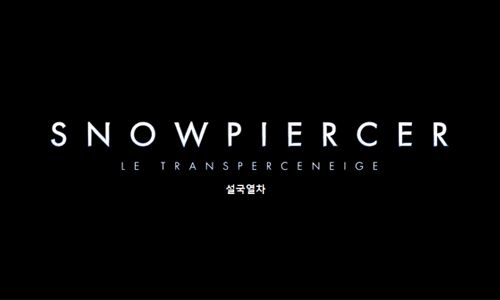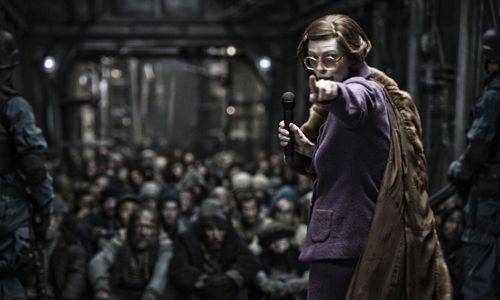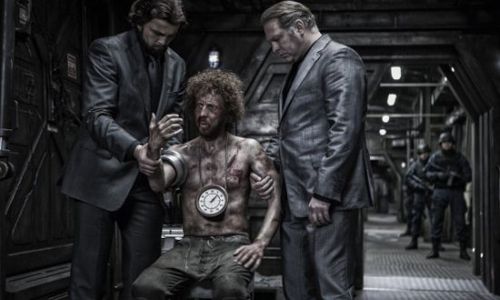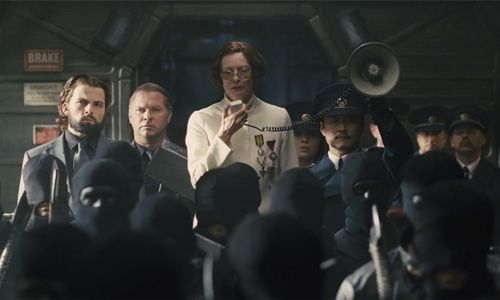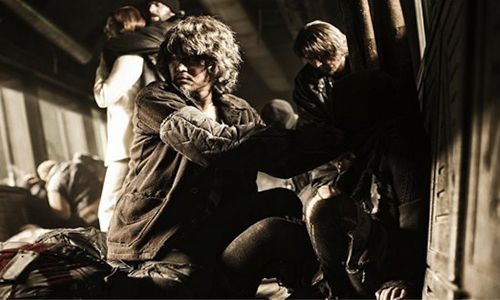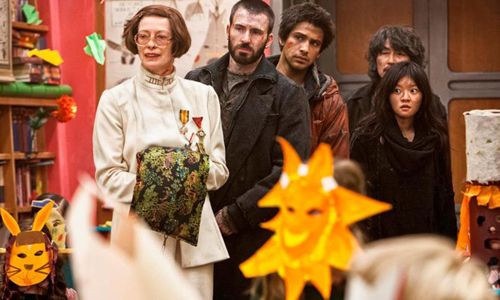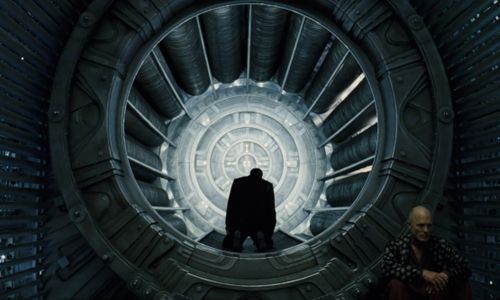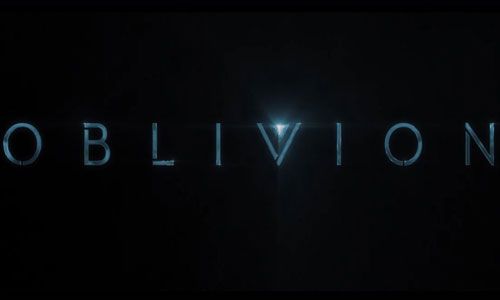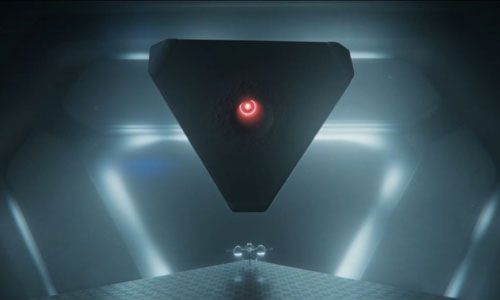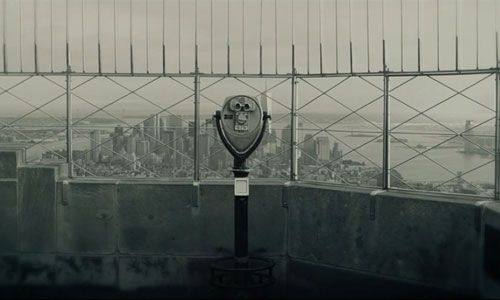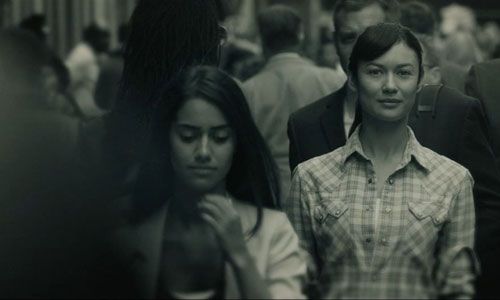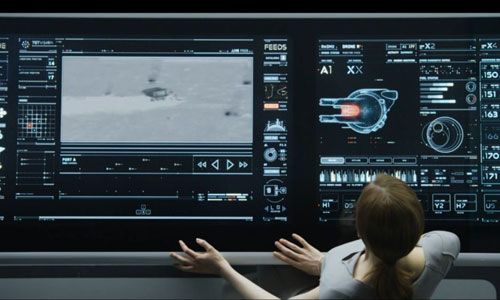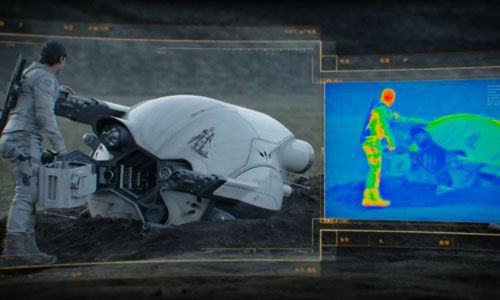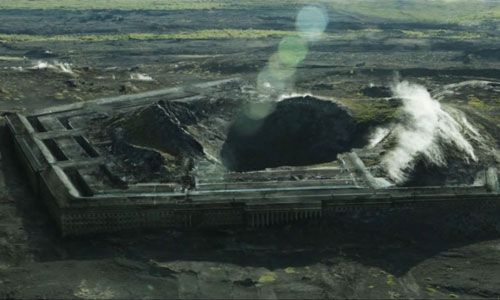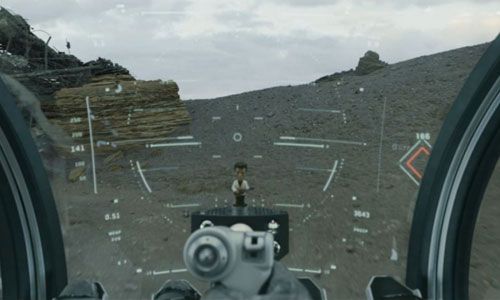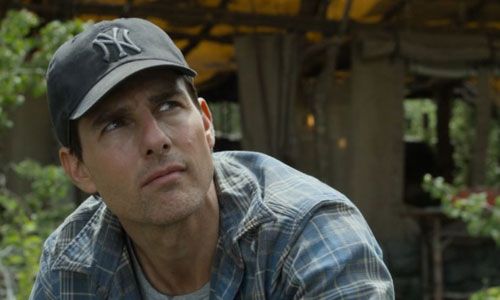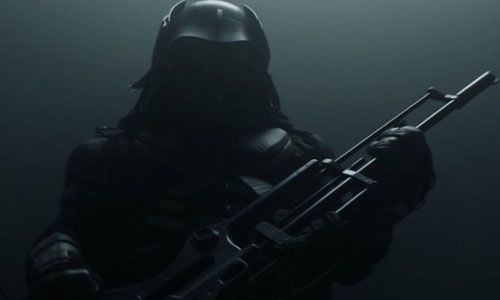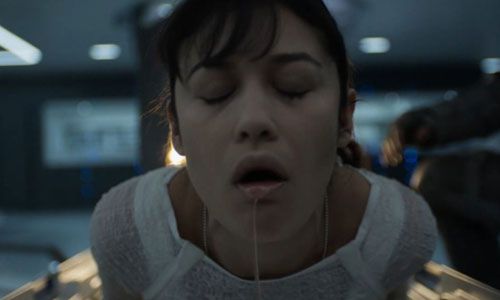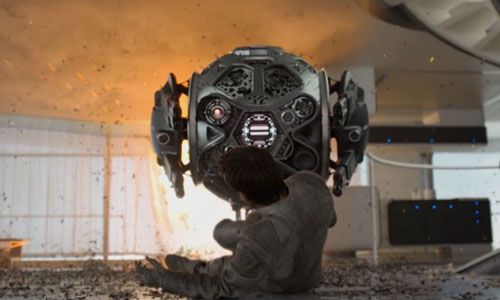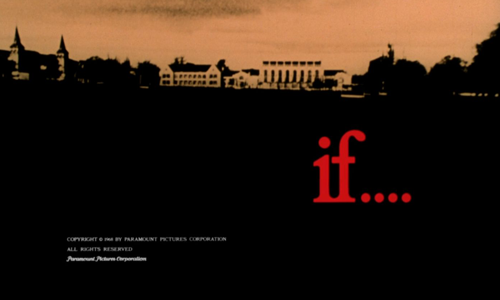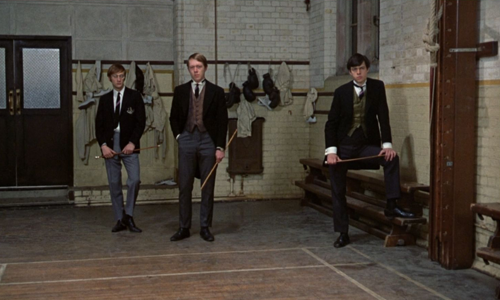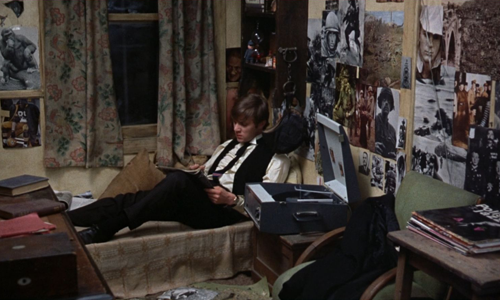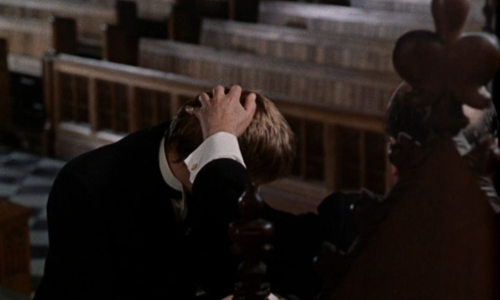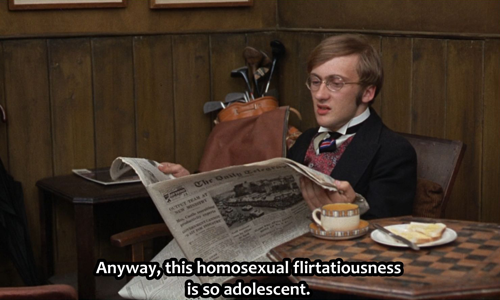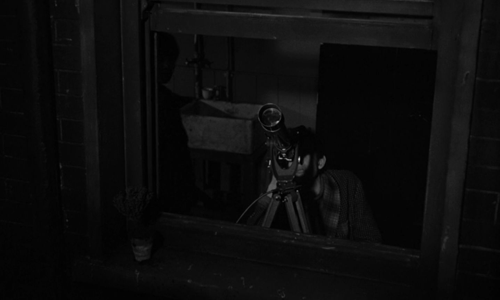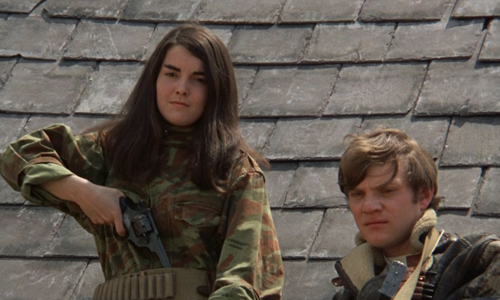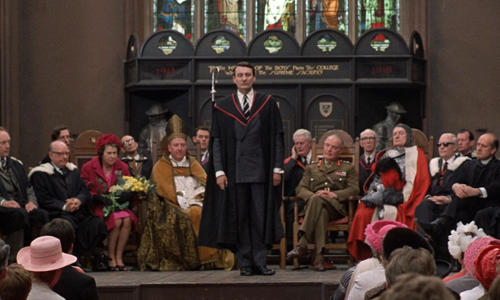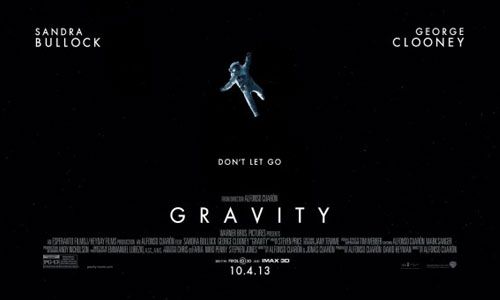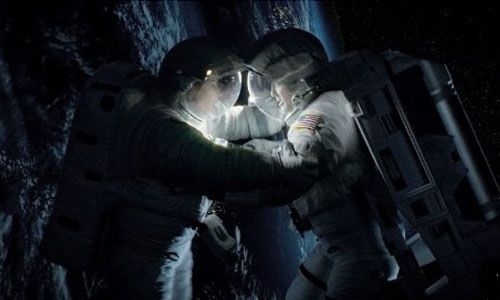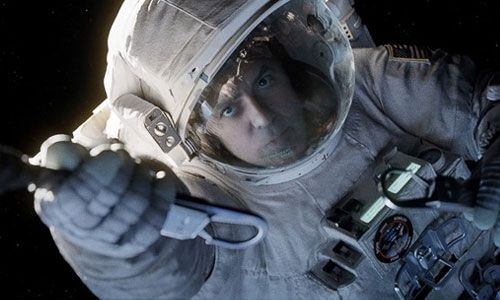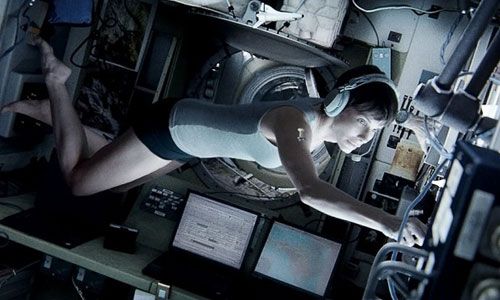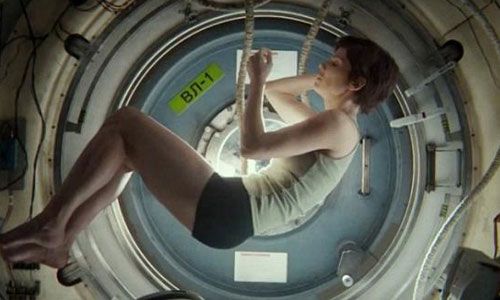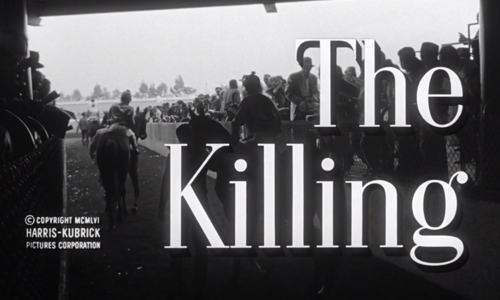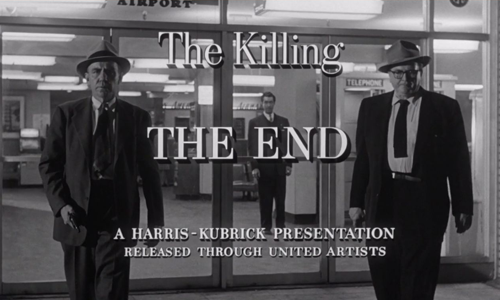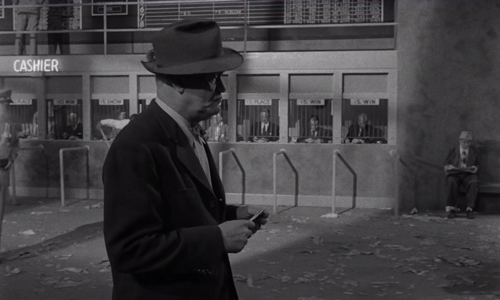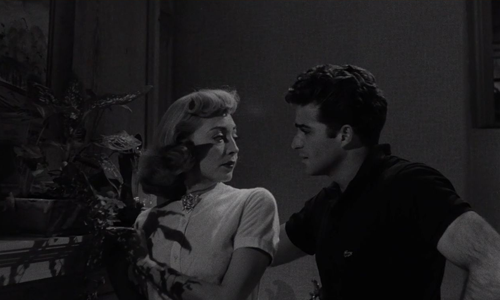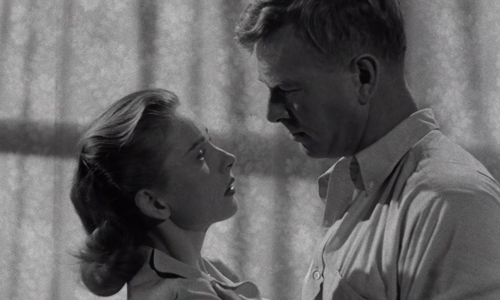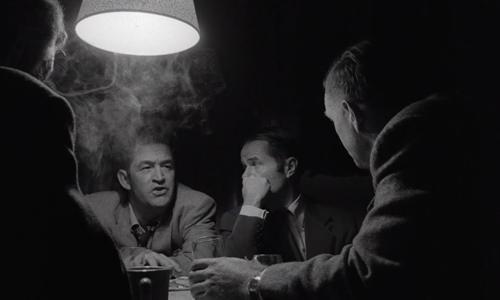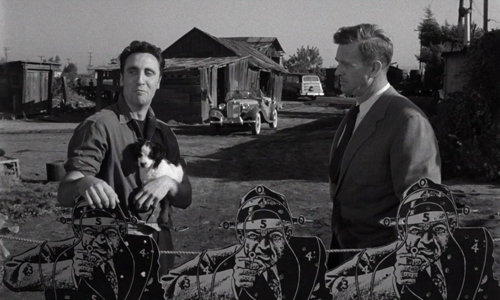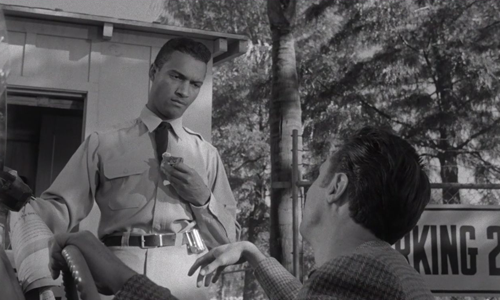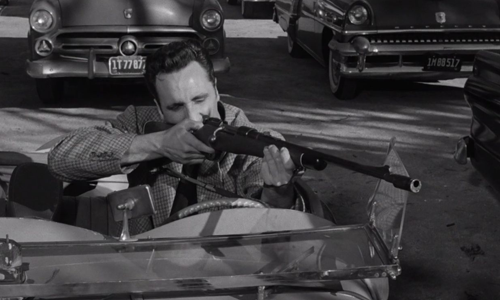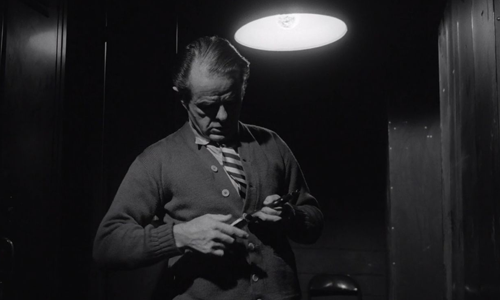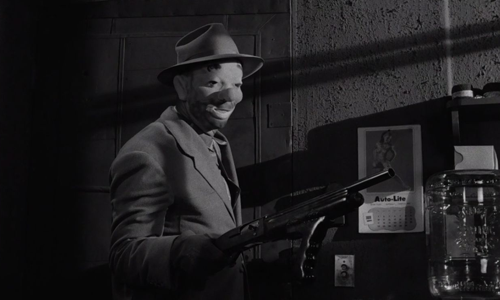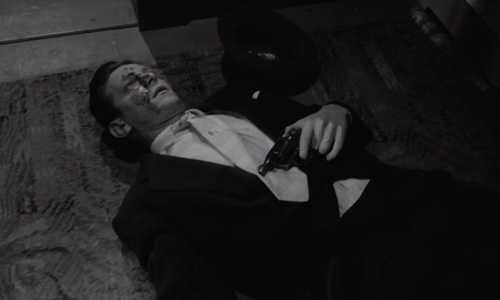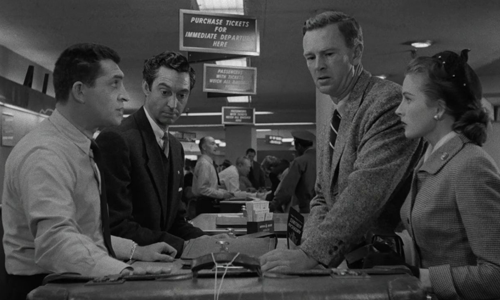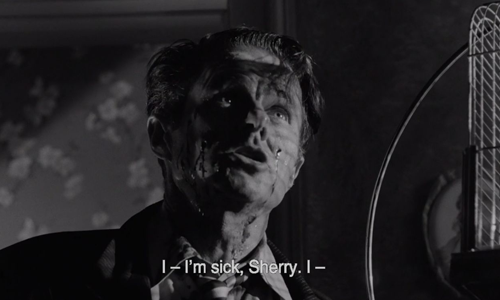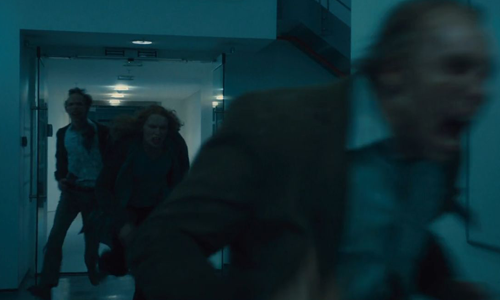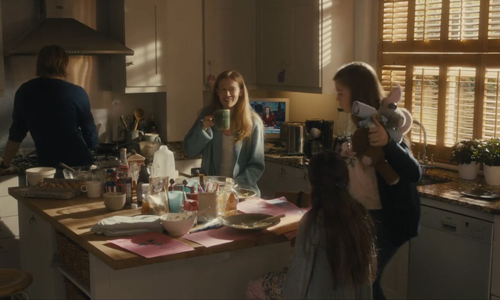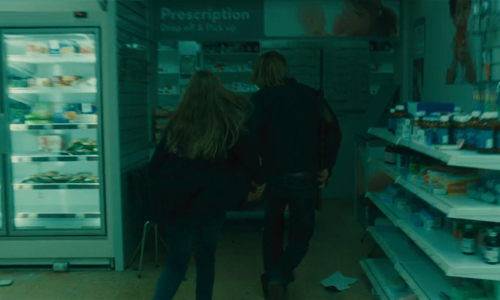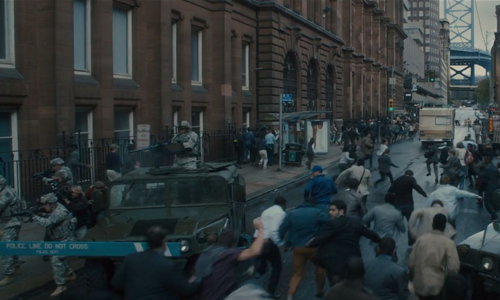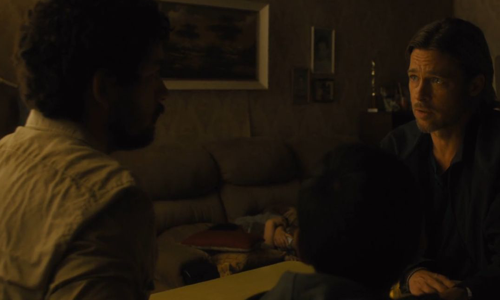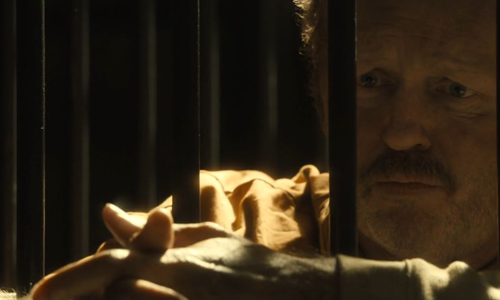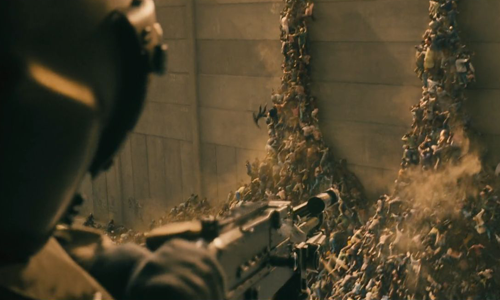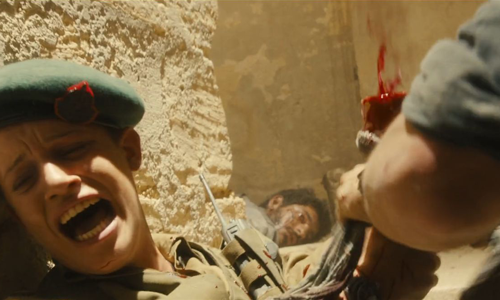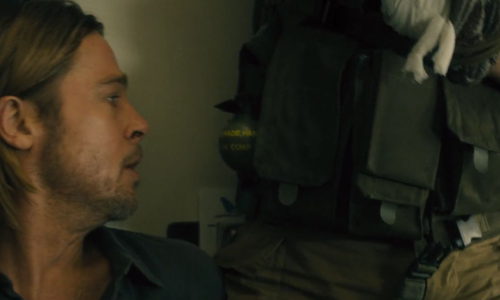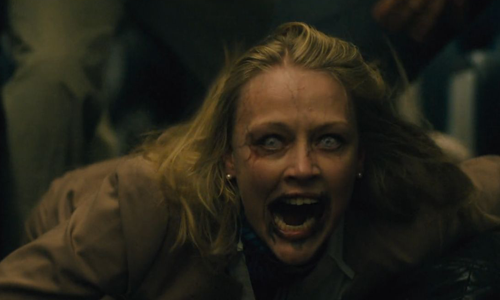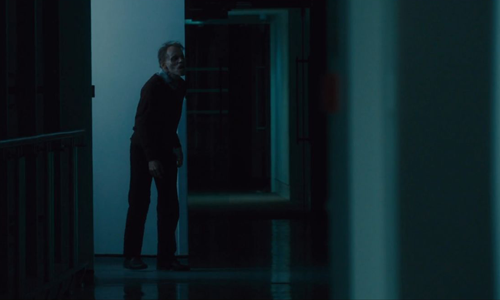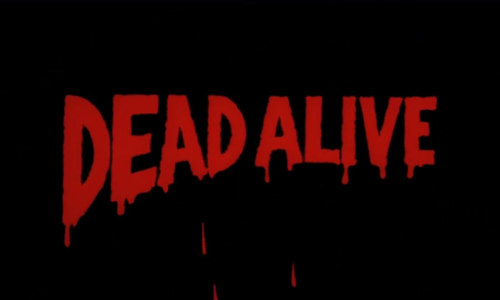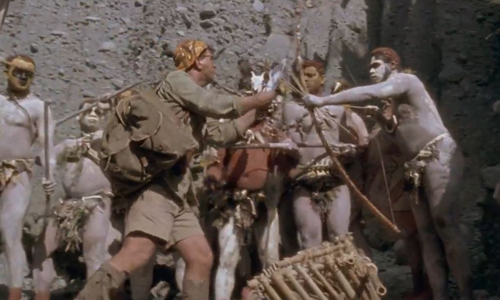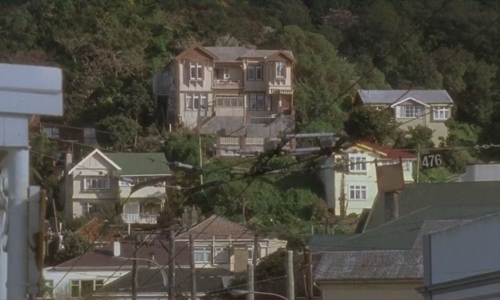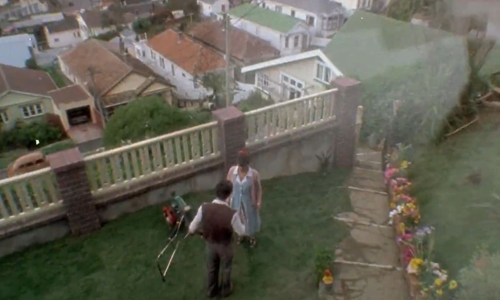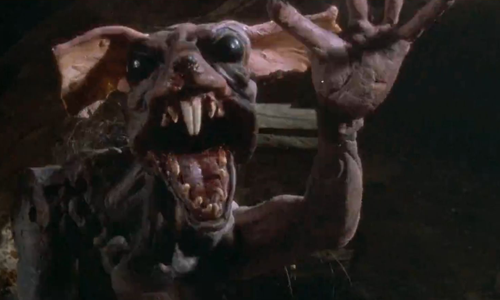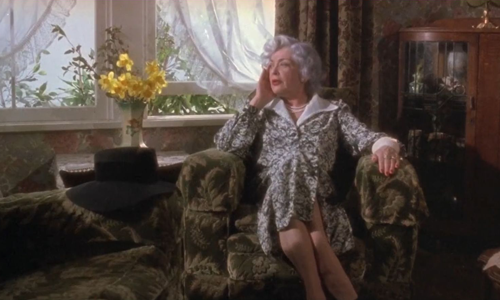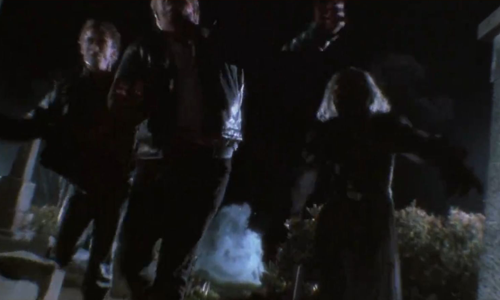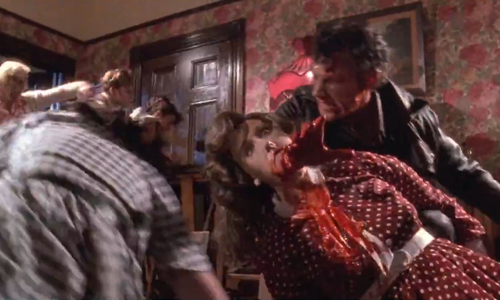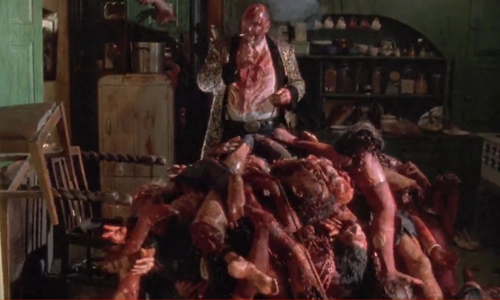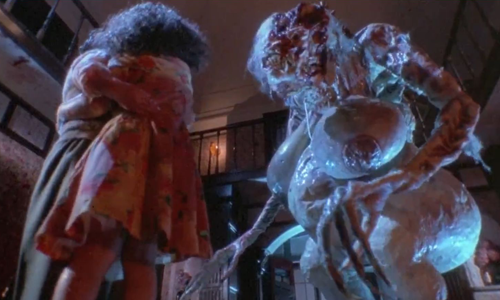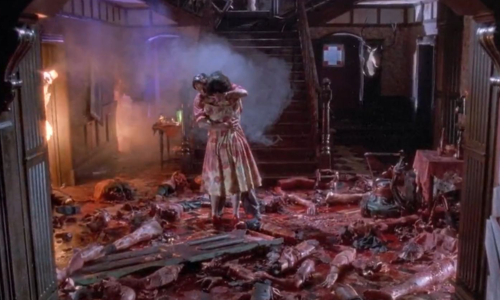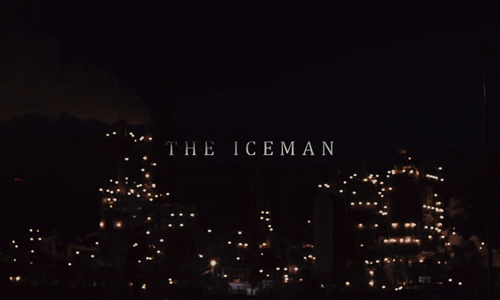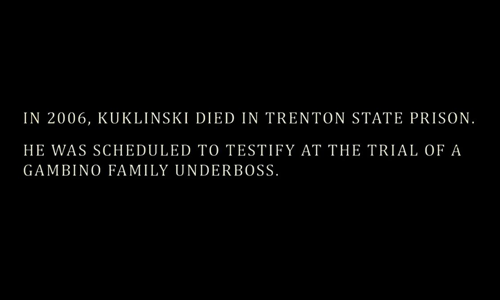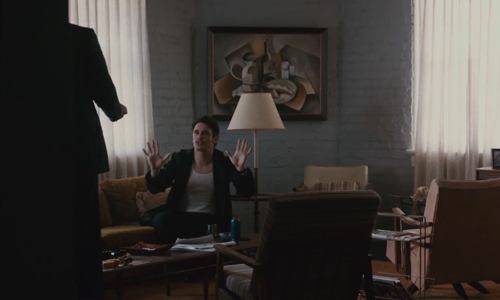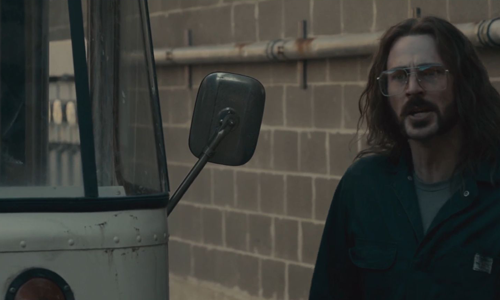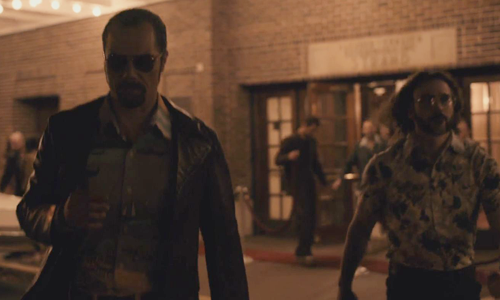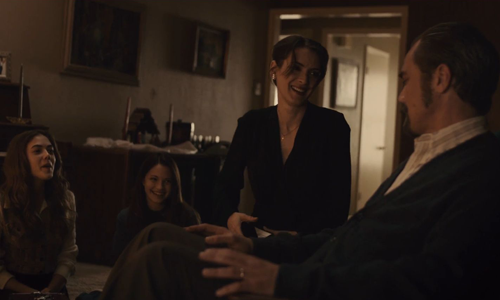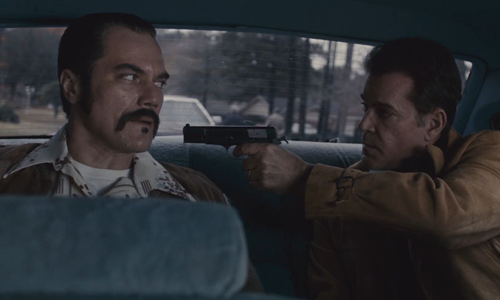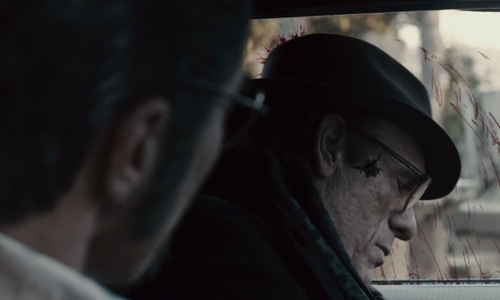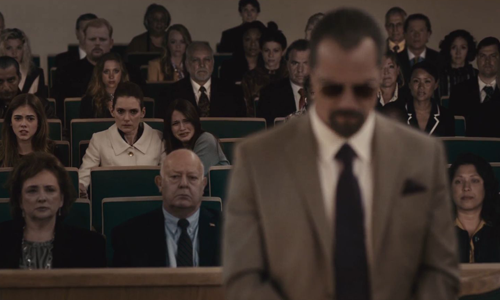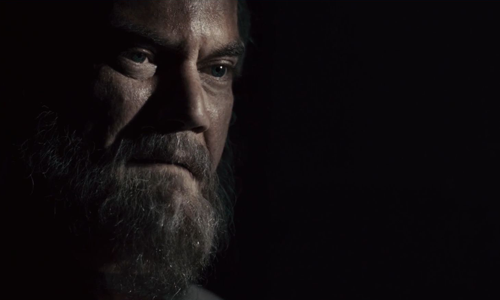#movie critic
Just because you can, doesn’t mean you should.
Ex-Machina is the brilliant undertaking of Alex Garland. It’s his directorial debut, and it is a lot of hype to live up to; considering, this film blows away all expectations.
A billionaire prodigy (Nathan) created a search engine called Bluebook that is used by over 90% of all internet users. He invites one of his employees (Caleb) to his estate that is built into an undisclosed location. He has him interact with a female AI (Ava) that he created and only the two now know of, as part of his first human trials outside of himself to test the AI’s compatibility with a stranger.
The film’s scenic value creates a lot of symbolism against Nathan as one notices that his subterranean estate is built into a mountain side alongside a river. His actual house however is one to marvel at as it resembles those fantastical modern architectural dreams only a billionaire would be able to afford, but others get to see pictures of on social media. But alas arriving to the point; it represents irony as the man truly enjoys nature as it is no accident that he built his own self sustaining generator so he can survive on his own proprietary energy devoid of outsiders. This balance of nature and technology shows just how much he wishes to combine the two — even though the creation of AI goes against the very nature he so likes to live in.
This film is the perfect example of what happens when one plays god and tries to quantify emotions into technology. Human emotions are one of the greater mysteries of life as people can be just as predictable and unpredictable in the choices and actions they make and or take. Once you give a blueprint to how one can manipulate human emotions it will create a sense of chaos as history proves; people do not like to be controlled or manipulated to do things outside of their own control.
Much like what is going on today as search engines are forced to give up our data to the government soon there will be an algorithm to humanity; we are already slowly seeing it in “targeted ads” via “cookies” stored on our computers.
As the story unfolds (without spoilers) we come to learn that our very own emotions can ultimately deceive us.
One thing of note to all philosophy buffs. At a certain point in the movie we witness Ava and her eagerness to see the world outside of her room. Nathan, being the creator detaches himself from having any emotional attachment to his creations as he has the ability to see it as exactly that, and he tries to control too much (a classic characteristic of all tech gurus) he tends to overlook his own folly, in that he created a being that can quantify human emotions and calculate God knows how many different scenarios at once before arriving to one they are satisfied with in their own sound logic, which is that of a sense of reasoning without emotion. Going back to the philosophical part; there is a scene in the movie where we see only shadows of people moving. Much like Plato’s Cave, it is a link to show that Ava knowing all there is to know about the world without seeing it, yearns to experience it for herself but much like the prisoners chained to the walls of the cave, she too is held captive in Nathan’s estate, only to have all the knowledge of the world without actually experiencing it.
Ex-Machina is a great film about the consequences we must suffer in our never-ending quest to seek knowledge and push the boundaries of humanity and just what it means to accept the limitations we as humans have.
“No fate but what me make.” -Sarah Connor
*Sidenote all this time I thought the actor playing Nathan (Oscar Isaac) was David Krumholtz and kept thinking throughout the movie, “you’ve come a long way since Santa Claus” but then Buzzfeed told me that they’re two different people, lol.
4/4
Michael Keaton…who knew?
I am literally astounded at the technical and storytelling innovation that went into this film.
Riggin Thomson (Keaton) is now just a former shell of himself from his prime during the early to mid-90’s where he reigned supreme as the “it” actor grossing billions of dollars off the “Birdman” franchise. He has since fallen off Hollywood relevancy and is attempting a comeback by writing, directing and starring in his own Broadway play that is loosely based on his life.
From the opening credits, the audience knows that this film marches to the beat of its own drum as the director nods to the rebellious Godard as he uses vibrant reds and blues to portray his opening credits, much like Godard’s work from the 60’s; the similar usage of typography and animation is used to set the tone for the film.
Alejandro González Iñárritu typically focuses on heavier themes and much more depressing narratives, from what I’ve seen (21 Grams & Babel). It was a welcoming surprise for me as this, relatively “dark comedy,” effectively weaves its way through the main characters ego revealing to himself the cruel truth he doesn’t want to hear, and then revealing to the audience (us) what he actually wants; as his ‘id’ is portrayed by his fictional on screen character “Birdman” as his conscience.
The film’s cinematography grabs a hold of your attention and forces you to move with the actors at their pace. I don’t know how they did it, but the movie almost feels like it was done in a single take.
Iñárritu, uses minimal surrealism in the film, which makes the film that much better, but more so he uses reality to show just how Keaton doesn’t really fit into society, anymore, as he’s refused to adapt to the times making his prescence in any scene almost surreal and anachronistic as we the audience are thinking to ourselves, everyone around Keaton’s character must be aware that he’s a washed up actor, thus creating a sense of tension in every scene as Keaton is just a hairline of a fracture away from losing it; and isn’t that just how an actor in real life is? Because a lot of their lives are surreal.
Overall though, I am glad the surrealism was kept to a minimum unlike films like “Synecdoche, New York” where I spent most of the movie trying to interpret Kaufman’s intentions, rather than enjoying it.
Keaton and Norton to Keaton and Stone — we get the most chemistry, as both pairs convincingly play out their roles to the extent where it didn’t even feel like acting; I actually found myself wishing success to Emma Stone’s character and an untimely demise for Edward Norton’s. Norton, also tears this film a new one as an experience obsessed actor that dabbles a little too much in his own methodology as he instigates fear amongst his cohorts, coupled with his compulsive attitude he goes off on his own self-absorbed tirades of being a real stage actor with actual range, rather than some former film superstar that relies on special effects and bloated budgets to gain notoriety.
These type of satirical autobiographical films seem to do wonders, revitilizing and or finding actor’s careers as we saw with Mickey Rourke in “The Wrestler” and Eminem with “8 Mile.” It even goes to show how much the public is hungry to see something “realistic” while poking fun at a person as long as its not themselves.
Suffering for your art/passion is a time honored tradition amongst creatives and if one feels themselves getting empowered after watching this film, one also gets to walk away with the feeling of acceptance in that, you’re not the only one that is suffering and or things could be worse…
Birdman was a breath of fresh air in an otherwise dull climate full of movies that:
1. Thanks to VOD and Redbox — movies are being pumped out left and right, I cannot keep up anymore, and it has to be assumed that most of the drabble being pumped out are not good.
2. Social media, tends to dumb down cinema nowadays, but watching a movie like this restores faith in the art.
3. (not that I am complaining) It’s nice to see a passionate film versus another cgi infused actioner.
Birdman, does not try to be something it is not. It delivers inspiring performances from everyone involved.
4/4
Oh what, Charles Dance is Dracula’s maker?
Dracula Untold is a piece of historical fiction (lol). Vlad the Impaler was a real person who struck fear into his opponents by impaling his victims, and Mehmed was a real Sultan during the Ottoman Empire (Turkey). Vlad and Mehmed did meet each other in the battlefield during Mehmed’s conquest of Southern Europe; whilst spreading Islam. What’s considered Southern Europe? I don’t know, other than Romania — because that’s where Bram Stoker’s Dracula (the vampire) takes place.
Vlad, wants peace as he’s tired from fighting and resents his violent past as well as his methods. He does not want to be known as “The Impaler.” He is the prince of his land and is in charge of the safety of his people. Vlad wants to be a kind but firm ruler, but his patience is tested as Mehmed encroaches into his lands thus commmitting an act of war, however, these are the Turks we are talking about and they have already conquered many lands and knowing this Vlad knew he stood no chance against the sheer size of Mehmed’s army. To raise the stakes even higher, Mehmed taunts Vlad by even threatening to take Vlad’s son to raise as his own. Not knowing what to do Vlad climbs the mountains that no one dares go near in search of a monster that can lend him immense power to fight the Turks.
Much of this film is centered around Vlad’s personal conflicts as the actor Luke Evans portrays Vlad in a one dimensional output of much distress as he cringes his face throughout the whole film, at just about everything.
The important lesson to be learned in this film is that committing your soul to the darkside comes with dire consequences that we as people cannot comprehend on how to control. You cannot seek guidance from a monster and any power lent to you by a creature dwelling in the dark, is just bad news.
Dracula Untold, is accidentally entertaining in that the film tries to make you sympathsize for Vlad as his choice was a difficult one, but when your kingdom and family is threatened what is a prince to do? But we must not forget this is also Dracula, we’re talking about.
I was sorely disappointed in the action sequences as the editing consisted of incredibly fast takes and just when you, the audience realize you were robbed of your time, the cut away scenes get even worse as the filmmakers thought they were clever in preserving the PG-13 rating as the last half of the only fight scene that mattered was resolved via the reflection of a falling blade of a fallen soldier in slow motion. Seriously? Wtf. It felt like I was watching an intro montage, which would’ve been okay, but this was already halfway into the movie.
One brightspot was the villain from my “go to” childhood action movie “The Last Action Hero,” was Dracula’s maker and that was amusing to me as I was able to recognize him right away even with the makeup; funny how those things stick with you. *note I did not mention Game of Thrones
I guess not much was to be expected as this is a cgi infused PG-13 film about Dracula; expectations are to be held in check as this is a farcry from Coppola’s Dracula. Credit is due to the writers as they were able to integrate some historical facts into the film which gave its plot some depth. Furthermore, I am such a sucker for these types of films about heroes with godlike strength — this won’t be the last PG-13 action movie I will be disappointed in and it certainly isn’t the first.
2/4
Not once does this film give into popular conventions. And I love it for that.
Snowpiercer is a film by Bong Joon Ho, this was a film with clear classist values with sci-fi undertones. The director did an excellent job bringing to life his ambitious vision; inspired by a French graphic novel (I have not read it, therefore I will not compare it).
Earth has succumbed to the effects of global warming and in a last ditch effort, humans release a chemical cooling agent into the atmosphere, in hopes to delay the inevitable. This fails; and in turn throws the planet into another Ice Age ending civilization as we know it. The precious few that remain, live in a train, created by its deranged genius Wilford; empowered with the God complex, Wilford forcibly creates a caste system in which the poor suffer inhumane conditions while the rich survive blissfully at the front of the train.
Visceral and intense, the film’s momentum happens rather quickly, as the characters are introduced one after another. They are all in agreement that living in the back of the train sucks, and what’s the point of holding onto erroneous ideals of class when society as a whole has already been reduced to a precious few, why not smash the socioeconomic barrier and attempt to progress humanity beyond the train.
As the gritty violence unfurls and the revolution begins, a lot of violence ensues in a leisurely fashion. I say leisurely, for the survivors even take a break from fighting to ring in the new year, enjoy sushi, and observe a classroom. I really enjoyed this aspect of the movie for Bong Joon Ho plays off the ethos of the survivors. There’s no where else to go but backwards or forward and atop of that aspect, what real purpose is there in fighting, when there’s virtually nothing left to fight over. The tight quarters of the train impacts the environment of its characters effectively thus making the film less about being a sci-fi action thriller and more of an allegory on humanity’s destructive nature.
Ed Harris plays an offshoot of Conrad’s deranged “Mr. Kurtz” or depending on how you look at it; Coppola’s Col. Kurtz. As he is a genius engineer that built the train and eventually adopts a philosophical view that eventually develops into an insane God complex, obsessed with keeping everyone on the train, as he decides who lives and who dies.
Depending on how you look at it the train in the film can be viewed as a metaphor, for like society’s thought process; narrow and enclosed, the train in itself is narrow and enclosed as it trudges forward in a never ending loop, doomed to repeat the same steps over and over again.
Bong Joon Ho took on an immense task readying this film for the international market, and it’s a true testament to his skill as a director of which English is not the primary language, yet he was still able to direct a cast that is comprised of mostly English speaking Caucasians, and still make an effective sci-fi film.
3.5/4
Science fiction that requires no thinking.
Oblivion is a film by Joseph Kosinski, one cannot completely hate this film, for the director tries to expose elements of a true sci-fi film to the masses, of whom would otherwise never give two squirts of piss about the genre. It has all the makings of a great film; the main point being that existential philosophy is intertwined into a story about a post-apocalyptic future on Earth, in which the narration in it of itself is just an illusion.
An alien race known as “Scavs” suddenly appear in Earth’s orbit, they lay waste to our planet for theirs is ruined and they are in need of our resources. Humans are forced to use nukes to stop the Scavs but in doing so ruin Earth, leaving it uninhabitable. Humans are relocated to one of the moons of Saturn and Earth is drained of its remaining resources to help power the human’s new home. in order for this to happen a 2-man team is left on Earth to maintain the machines that carry out these tasks. One day pods crash land on Earth with human survivors and this sets off a chain of events that begin to arise questions within one of the two workers on Earth.
Kosinski does not disappoint in the visual sector as he brings to life the visual effects—effectively within the boundaries of Oblivion’s story. The design of the ships as well as the costumes and the minimal usage of colors reminds the viewer heavily of the greater films that inspired this one.
My main gripe with this film is that there isn’t much originality in it. It is an over simplified high production film that doesn’t leave much to the imagination, but to be fair I saw this film as an introductory lesson in great sci-fi, for the demographic, this film obviously tries to capture are the same people who are fans of Tron and or Tron Legacy, the latter being a film also by Kosinski.
The film tries to weigh upon our emotions as it questions the true identity and worth of the human soul as well as the value of our memories. What makes people, people? Physically we are present, but that’s something that science is proving can be artificially created, so what makes you, you? Oblivion tries to capture this existential state of being in an elementary way as it trudges along its beautiful CGI induced landscapes. It really presents a false sense of being in that it tries to be too intelligible for its own good. Oblivion even spotlights Andrew Wyeth’s renowned art piece “Christina’s World.” A painting considered to be in high regard and a prime example of existential art, for at first glance you see a girl in the prairie and depending on the person one can interpret this painting many different ways for her positioning as well as the isolation invokes many feelings in people. Oblivion tries to piggyback a lot of the film’s contents off the profound content from other people’s works as this film centers around the premise that things are just an illusion and human’s are very easy to manipulate with the right amount of fear instilled into their being.
Development is almost non-existent in this film, as it suffers quality to squeeze in quantity; while at the same time hiding its twists; I guess this is something that would have served better had they hired a better screenwriter or maybe added 15-20 more minutes to the film. It has the feeling of being profound but take away all the bells and whistles and one realizes that everything in this film that gives it any kind of merit is actually borrowed from other films, leaving behind a movie that stands alone as a barely passable action film with a sci-fi theme.
The desolation in the film was the best emotional response I got from it, as it was kept on a very tight leash. To understand that there’s so much empty space available on Earth, but to be limited to such a small sector was really invigorating in terms of the film’s mystique.
I applaud the director on being so sci-fi savvy, and admire his ambition in wanting to expose a great genre that doesn’t get the attention it deserves to a wider audience. However, he needs to work on a project in a collaborative effort, for I do not think he can do it alone. One day, I would love to see his talents develop under the tutelage of the Wachowskis, together they can make a film that would be a classic.
¾
-DK
Tradition, squandered by youth.
If…., is a film by Lindsay Anderson, a director so meticulous, he’s able to capture the non-sequential spontaneous acts of adolescent boys and frame it in such a way that forces the audience to admire each sequence in the movie.
This film follows the path of students entering their senior year at a boarding school in England during its post WWII era. They are constantly drilled to uphold tradition as well as pride for their country. As adolescents they naturally rebel against the system in typical fashion; drinking, smoking, sneaking off campus…Their expectations for life and their school eventually go completely awry as their own boredom takes over and they plan to lash out violently towards their fellow classmates as well as teachers.
Lindsay Anderson’s vision for the film is a cinematographic masterpiece, in which he portrays an err of caution towards Britain and their traditionalism as they needlessly force old values onto their youths. And grant privilege to those who are undeserving and solely given privileges just because of their birth rights.
Anarchy, is the film’s greatest prescursor as the main characters often break the rules of the strict boarding school by intentionally going against all of its teachings. Their dormitory is even transformed with pictures of war and violence, as its contents decorate their walls; giving clue to the audience that these boys are “lost” and are seeking a greater focal point for their adolescent mind sets. They are seeking for something more, something to fight for and believe in, but cannot find due to the rigid nature of the traditions they must live by.
Like all films that go against archaic traditions and enforce progressive values, the film itself, in its storytelling is different. From the same school of thought as Godard, the film bounces from black and white to color; I tried to think really hard what the director’s intentions were behind this ploy, but couldn’t quite come up with a reason other then the fact that whenever the black and white sequences were occurring, the most simple and mundane tasks were being displayed on screen.
If…., is a great example of a film with not much going on for the majority of its duration, but builds upon performance and its content; the director does a great job with shot selection for he must have had a good working relationship with the cinematographer as it shows in each scene. The film stands out as social commentary and art, the majority of the film is memorable visually in my mind like a photo memorabilia. Lastly, as a side note; it goes without saying, this must have been a film J.K. Rowling scrutinized over for a lot of the details in the film, down to even how the characters are dressed remind me heavily of Harry Potter…
4/4
-DK
Perseverance it’s what keeps you going.
Gravity is a film directed by Alfonso Cuaron, a rare director that is able to take virtually any story handed to him and have it be told through beautiful cinematic sequences. From A Little Princess to Children of Men, his vision for movies is unparalleled and always plummets its audience deep into his film’s story.
A team of astronauts from NASA are sent into space to fix the orbiting Hubble telescope. During their mission another orbiting satellite is destroyed and its remnants now space debris. The debris is rapidly hurdling itself toward the team of NASA astronauts and inevitably makes contact with them, destroying their ship and leaving two astronauts stranded right outside Earth’s atmosphere.
When watching Gravity, and its plot develop, the audience not only is impressed by the amazing visuals in the film, but also by the emotional depth it carries. Sandra Bullock carries the entire film on her back as she goes from the disparate astronaut of whom essentially is in space to do a job and is all “business,” unlike George Clooney, who is often cracking jokes and telling stories while doing his spacewalk. It is in the small moments of dialogue between Bullock and Clooney do we get to realize what each character is about; and the different reasons they have in partaking in a remarkable experience of going to space.
Bullock is disjointed and wandering life with no destination, which makes space the perfect place for her; her character suffered through a tragedy in which her daughter’s life was taken from her due to a freak accident, and it left Bullock questioning the meaning of her existence; with work being the only reason for her existence.
She uses the opportunity that she has with Clooney to talk to him about her problems; turning space into her proverbial chaise lounge in a psychiatrist’s office. It is in these intimate moments that the audience can realize, that there are moments in life that will drag us down, but it’s how we overcome our obstacles and what we take away from the life lesson, is what shapes our future.
In the beginning Bullock’s character goes into space where the lack of gravity is symbolism for her not wanting to face the weight of her issues, but ironically enough it is her issues that help her realize her true strength and helps guide her through her predicament.
Cuaron majestically captures Bullock in the most beautiful ways as her dainty but fit body whimsically floats around in zero gravity, and her emotional depth drives the film past being just a visual spectacle. The moral of the film is simplified due to the simple nature of space and its representation of nothing and everything; the point here is to always persevere against all odds.
This is hands down the single greatest cinematic experience I’ve had in the better part of the last 3 years. Cuaron restores my faith in modern cinema with this gem. This entire film is one long breathtaking visual feat, packed with uncompromising suspense and reminds us that the problems we face on a daily basis is nothing compared to the grand scheme of life.
4/4
-DK
Nurturing genius.
The Killing (1956) is a film by Stanley Kubrick. It has the makings of a classic, but held back only because of the time period in which the film was released, but nevertheless it’s still a prolific look into the minutia of Kubrick.
An ex-convict, finally free from Alcatraz has planned a heist down to the ’t.’ He has gathered all the right pieces that he must need to make it succeed as he brings together a team of people all necessary for the success of the heist. However, the one thing he could not calculate were each person’s motives as well as their personal lives; as the story unfurls so does the universe’s uncertainty as the otherwise perfect plan slowly unravels due to the unpredictable nature of the human condition.
This is a very enjoyable film, for its narration creates the momentum for the film as the ominous narrator pushes the story along in the form of a cautionary tale. The narration also gives clue to the fact that this heist had already happened and that as the audience what we are watching is a re-telling of it, giving the film a superlative feel for the audience as we get to be spoiled with Kubrick’s relatively genius and innovative screenplay.
It’s amazing how much “fat-trimming” is done to the film, as each character isn’t developed by their individuality, for it seemed like the decade in which it takes place defines the characters, for all the roles were seemingly cliche. Yet their intentions for taking the job are all highlighted in their respective categories, which allows the audience to realize why it’s so difficult managing people, because everyone has problems of their own, but will place them on the “back burner” in order to make capital, and to maintain a level of professionalism. Characters need not apply in heist films, only their skill sets, because the success and failure of a heist film lie within the details of the film’s writing.
Kubrick indeed captures the violence in the film with great shock, relative to its time period, as its shaky movements makes its rounds, carefully framing each shot to emphasize the actions of the individuals involved in the caper.
Stanley Kubrick even gives a nod to the game of chess. He alludes to the fact that like chess even the smallest movement of its pieces can completely alter the outcome of the game. This is a great metaphor for the plot as a lot of emphasis is placed upon the precision of the people involved in the heist, and how important each of their roles are to the overall success of the job.
The Killing was an absolute privilege to watch. It shows the makings of a genius filmmaker who will later move on to make 2001, Dr. Strangelove, Barry Lyndon etc. It’s not an depth character study like Clockwork, nor is it revolutionary like 2001, but The Killing is a solid heist film that is created with careful detail
3.5/4
-DK
One thing is clear about this film, the director has seen zombie movies before.
World War Z is directed by Marc Forster, a director who in my opinion just can’t seem to catch a break in the action genre. Don’t get me wrong I loved Finding Neverland and The Kite Runner, both inspirational and uplifting films, but come on now, Quantum of Solace and Machine Gun Preacher? And now WWZ—money is clearly the motive here.
World War Z is the film adaptation of the book by Max Brooks. I have never read the book, so I will not be comparing the film to it; this review will be solely based on the film’s merit. A viral pathogen threatens mankind as it turns people into violent zombies that topple armies and governments. One man is charged with journeying across the globe in search of an answer to the pandemic…
There are a couple moments in the film where we as an audience get to realize that this is a great film, but not for what it is made for. The writing sends us off in multiple directions and ultimately loses the audience on the film’s point. When the comparison between mother nature and serial killers is formed we begin to think, oh maybe humans did this, maybe there is a lesson to be learned here, but then that point gets quickly dropped. Then I was infatuated by Brad Pitt’s character and his resourcefulness as the minutia in his character’s observational skills slowly gives clues to the audience on solving the pandemic; these skills were taught to himself from his days as an UN Investigator. The film begins to finally finds its bearings in that it is all on Pitt to save the world, kind of ridiculous; so is this film supposed to be a metaphor or a political thriller? And then we get the film’s money shots in which we realize this is a survival movie, but on a grand scale, but then as that begins to develop in the film we are brought right back down again for the film then actually turns into a decent survival horror movie.
One grandiose point I’d like to bring up, that in my opinion was the film’s saving grace from being a total fiasco, were the sequences in Israel. From a sociological standpoint this was remarkable, because the Jewish nation of Israel is comprised of people who have been persecuted for literally thousands of years, it only seemed forthright that they would be the most prepared as one of their analysts explains to Pitt’s character that the nation of Israel has come to embrace logic and implemented normalcy bias into their defensive strategies.
As Brad Pitt traverses around the world in search for an answer, there was a simile I kept thinking about; like a chicken with its head cut off, this film runs around desperately searching for its roots, for it’s completely unoriginal and unfaithful to its zombie roots, but serves as a decent anthropological look into the human potential in surviving an outbreak of biblical proportions.
I know this film only got green lit because of the recent trend humping of the zombie genre, so I’d like to interject a little overview on how one should perceive this genre. The best zombie film of all time, and one you should see before you consider yourself an aficionado of any sort and or even state an opinion about zombies is “George A. Romero’s Dawn of the Dead (1978).” This film not only is packed with brutally honest social commentary, but it is the reason why we love zombie films as Romero masterfully taps into the human psyche and our natural urge to reign chaos and act out our most ornery inhibitions. If you want to expand your knowledge base even further you’ll watch the cultist masterpiece, also from Romero “Day of the Dead (1980),” this film now expands upon Dawn of the Dead and gets experimental with its own subject matter, but if you want to see how a proper zombie horror/survival film is done, there is Danny Boyle’s “28 Days Later,” as its surrealistic take on the human condition warps your perception of reality as Boyle creates a scary scenario that felt all to real for comfort. And obviously ‘The Walking Dead’ series is the best contemporary off-shoot of Dawn of the Dead, for it finally is able to serialize the horror rather than limit it.
WWZ, wasn’t bad, it was fairly good. However, there is a film somewhere in this one that’s an actual great zombie horror-survival film, and hopefully the sequel will get it right. The director of this film has clearly seen zombie movies and used their outline to make WWZ, and that was my main problem with it. One would think with a $200 million budget; a budget, mind you, that’s unheard of for a zombie movie, would have had more originality than this film, but credit is due in that an entertaining zombie movie was made with a PG-13 rating…
2.5/4
-DK
Blood, guts and a lawnmower.
Dead Alive (aka Braindead) is directed by the fabled Peter Jackson. This film is an exhibition of gore with a context of hilarity. Although corny, the film exercises great discipline as Jackson was able to combine comedy, violence, romance, all of which get summed up in a satisfying denouement.
In a small town in Australia or New Zealand (I think it’s AU or NZ because people were flipping the bird with the “V” sign) a Sumatran Rat-Monkey has been flown in to show it off at the zoo. A histrionic mother spies on her son as he’s on a date at the zoo, unaware of her surroundings she is bitten by the Rat Monkey and is quickly turned into a psychotic zombie. Unbeknownst to her son who is named Lionel; he struggles to keep her “alive” as he takes on a hilarious sense of denial and treats her with the same attention as if she was alive, but with the same precautions one would take with a wild animal. Her condition worsens and soon she is biting others and as they turn, Lionel realizes there is too much to handle between his new found lover, his scheming uncle and his uncontrollable collection of zombies…
The environment created by Jackson in this film adds to this film’s core values, as it doesn’t take itself seriously. The design of the town in which Lionel lives in mirrors that of an ideal “small town” during the 50’s, occupied by set pieces that rival the model set in which “Mr. Roger’s Neighborhood” takes place. Overall, the theme here is “happy go-lucky.” All these elements eventually get shit on by the irony imposed by Jackson in this “squarish” town when the blood and gore begin to splatter, which only adds to the film’s aesthetic appeal.
Peter Jackson, has crafted a wonderful cultist gem in this movie. I loved all of its “campy” elements as it takes on a light-hearted approach to gore a la Sam Raimi. There are absurd close-ups and the content is a joke, at one point there is a kung-fu priest who fights the zombies in the name of the lord as he begins to dismember their body parts with his brute strength, then two zombies even copulate and create a mischievous cannibalistic zombie baby that comically wreaks havoc throughout the duration of the film. By the film’s climax the protagonist plows his way through rows of zombies with his lawnmower strapped to his person and is left in a puddle of blood, so much blood that he’s barely able to stand without slipping.
Dead Alive even finds time through all of its gore infused calamity to even bring closure to the film’s protagonist as he finds out that his domineering mother isn’t the saint he thought she was. Jackson even hints towards an extreme bout of symbolism as he shows Lionel being “born anew” for Lionel gets absorbed into his mother’s womb and has to tear himself out to be free of her, and gain his freedom.
This film is by far one of the most entertaining films I have ever seen. I love these corny forays into gore, it really let’s the imagination run free without having it be sadistic. I know however, that this film’s content isn’t for everyone since not many can take its subject matter seriously enough to enjoy, if that makes sense to you…
3.5/4
-DK
A mind made for murder.
The Iceman is a film by Ariel Vromen. I have never heard of him before this, but he does a decent job creating a film with a lot of potential, but with a lack of direction on its story and its characters’ developments, which ultimately makes this film a lackluster portrayal of a ruthless killer.
Richard Kukliniski was dubbed the “Iceman” after his victims were found to be frozen in order to hide their time of death from the coroners. He rose from low level illegal pornographic distributor for the mafia to favored hitman for the New Jersey and New York crime families; over the span of his illustrious 30+ years as a contract killer he has claimed to have killed over 100 people. During that time span he also raised a family, of whom knew nothing of his troubled career. This film is based on a true story of an inherently evil being who has claimed to have no emotions towards the killings of others.
A lot of the problems in this film revolve around its own timespan. Because Kuklinski is a sociopath and exactly when he started killing are left to our own interpretation the film suffers, for it begins to develop a plot and then goes off track just as quickly. The focus becomes less and less about the psychological nature of what makes Kukliniski so fascinating and more about the betrayal that comes with the territory of being a criminal. There wasn’t enough method in the film to his killings, this was a big “no-no” for me considering a lot of these details are already readily available via the HBO’s documentary/interview with the real Richard Kukliniski.
However, The Iceman is enriched with excellent performances, from all of its actors as they are introduced into the film almost like the ghosts that inhabited Scrooge’s dreams in Dickens’ A Christmas Carol. Each significant visitor being played out in short segments of pure brilliance. It is in these short moments do we get to see where the film shines for it is after each of these interactions do we as an audience get to see Kukliniski’s character lose his way, more and more.
Specific moments that stood out for this film were his interactions with his brother played by Stephen Dorff as he visits him in jail, as well as his interactions with his own wife played by Winona Ryder, and lastly his brief “divine intervention” with James Franco.
These actor’s performances really stood out for me for they are the driving force towards Kuklinski’s actions. His brother revealing that they are cold-blooded killers and unfit for society, his wife anchors what little humanity may or may not exist within Kuklinski, and lastly with James Franco’s character we realize Kuklinski is truly crazy for he questions God’s inability to stop himself from killing others, he even pauses his execution to give God an opportunity to stop him.
I am glad this was made, for Vromen is a talented director. He was able to make sense of a screenplay that should have otherwise been a movie that almost hit the 3 hour mark, but is abridged into just under 2hrs, presenting a lot of beautiful detail but failing to elaborate on a lot of it as they are short handed with cliche story telling to keep the film with a duration that can appeal to many. He just has to be careful on his next projects for I am sure this film will garner him attention in Hollywood.
Michael Shannon delivers a chilling performance as his burly disposition slowly turns from nihilism to pure evil. If this film wasn’t enough to prove his talent, I don’t know what will.
¾
-DK


